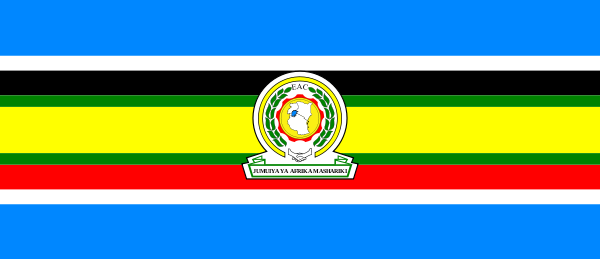East African Community – Single Currency
27 July, 2010
East Africa: Customs Union and Common Market Done – Single Currency To Do!
On 30 June, at the Sheraton Hotel in Kampala, five ambassadors stood before a map of East Africa, on which ribbons had been placed around the borders of Burundi, Kenya, Rwanda, Tanzania and Uganda. Each ambassador then proceeded to cut the ribbon at the border post of his country, in a symbolic gesture that marked the opening of a common market within the East African Community (EAC).
The common market is the second of three crucial milestones on the road to a single East African government. The first milestone, reached on 1 January 2010, was a customs union that lifted all import duties between the five member states.
Now, with the opening of the common market, all people, products, services and capital will enjoy freedom of movement between the states. However, it will still take another five years for member states to harmonise their national laws on immigration, labour and customs, in order to allow full and unhampered movement.
Monetary Union
In the meantime, the governors of EAC central banks have embarked on the road to the third milestone: an East African Monetary Union (EAMU) with a single currency. The banks have established a framework for fast-tracking the EAMU’s implementation by 2012.
The common currency will, in all probability, be called the East African shilling. This comes as no surprise, given that the individual currencies of the region are all shillings, and that an earlier East African chilling had already been used in British-controlled areas of East Africa until their independence in the 1960s.
Although the target date for monetary union is 2012, there are lingering questions about the common currency – questions which could delay implementation until 2015 or beyond:
A study carried out at the end of 2009 for the EAC by European Central Bank consultants showed that a number of challenges would have to be overcome in the region before a monetary union could take place. These relate principally to convergence in key economic areas of inflation, debt levels and GDP growth rates, which are still some way off.
The question of readiness has further been fuelled by the recent weakening of East African currencies against major international currencies. As a report by the World Bank puts it: ‘The objective of regional integration seems well founded, but it is unclear whether forming a monetary union will contribute greatly to it. A currency that is ill-managed and subject to continual depreciation is unlikely to stimulate pride or give member countries any clout on the world stage.’
Eurozone Crisis Casts Doubt
Meanwhile, the financial crisis in Greece – that has threatened the stability of the Eurozone – has caused a rethink of the EAMU timeline, especially because the EAC was contemplating adoption of the Eurozone and had contracted ECB consultants to advise on implementation.
David Nalo, permanent secretary in the Ministry for East Africa Cooperation, said the crisis in Greece had highlighted the need to understand how the financial sectors of member states are managed, because mistakes in one country may affect the financial stability of the whole region.
Mr Nalo said the priority is to ensure that the common market is successful: ‘If the market is not successful, there cannot be a monetary union, so we need to first work on it,’ he said.
This could mean that proper discussions on the monetary union may not even start until 2015.
The Bigger Picture
Moving now to the bigger picture, which also has implications for an East African currency – namely that of the entire African continent. In a July meeting of the central bank governors of 11 East African countries, there was general agreement that the continent was getting closer to a single currency.
‘Commendable progress has already been made in the East African region regarding monetary policy convergence,’ announced Professor Njuguna Ndung’u, Governor of the Central Bank of Kenya.
The governors were meeting to evaluate progress on the African Monetary Cooperation Program (AMCP), which began in 2002. The objective of the program is to harmonise all sub-region monetary programs into a single monetary zone, for the entire continent, by the year 2021 … with a common African currency and a common African Central Bank.
The program calls for each sub-region to meet a number of stringent economic convergence goals by 2012. These include a budget deficit not exceeding 3% of GDP, elimination of central bank credit to governments, and inflation not exceeding 5%.
With such moves afoot, there is an argument that once the continent establishes a united currency system, individual country currencies as well as the regional one for East Africa will be rendered redundant.
However, Mr Amason Kingi, the Kenyan EAC Minister states: ‘One of the key pillars to the realisation of the African Union is the successful integration of regional blocs. I don’t think our quest for a unified currency will conflict with what the continent is seeking.’
In the meantime, the question of when the new East African shilling will finally be launched still lingers.
SIDEBAR
The East African Community (EAC) was established in 1999 by Kenya, Uganda and Tanzania. Rwanda and Burundi joined in 2007. The EAC comprises 126 million people and has a total annual economic output of $73 billion.










